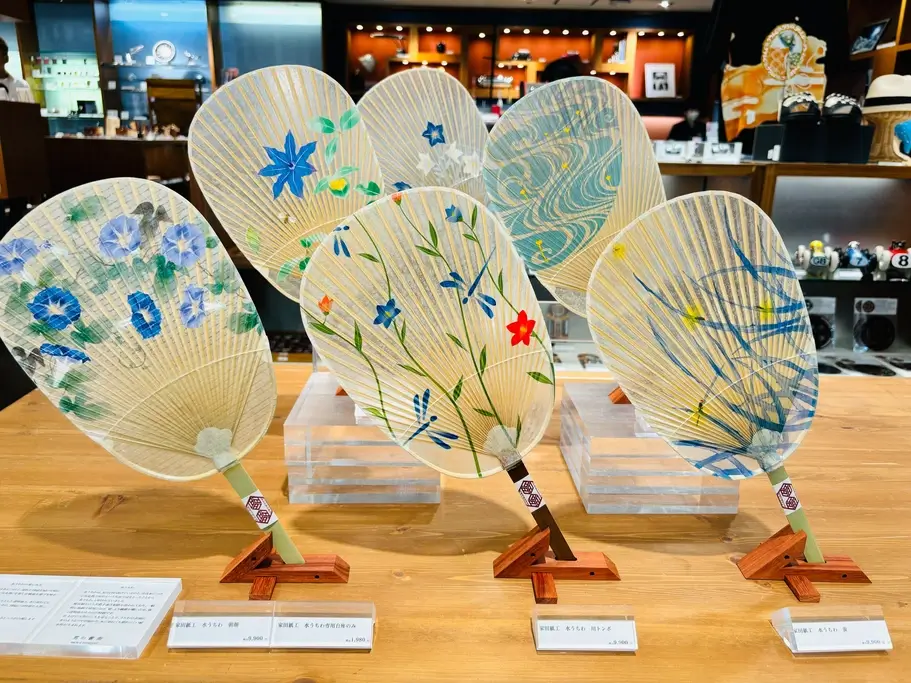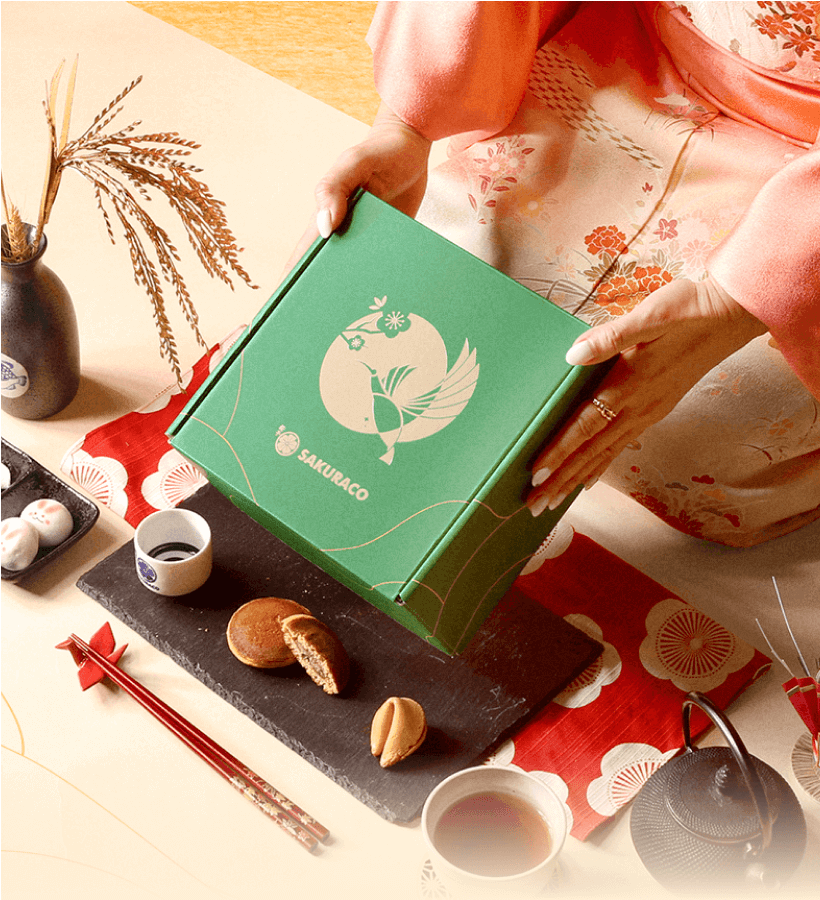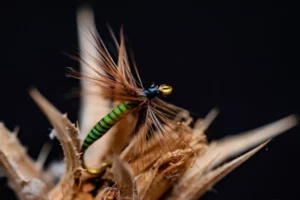Traditional Japanese fans are often more than just tools to stay cool; they’re like holding a quiet piece of Japan and its craftsmanship in your hand. Among them, mizu uchiwa stands out with its elegant look, soothing origin, and unique way of being made. Let’s take a closer look at this delightful summer treasure together!
Table of Contents
ToggleWhat is a mizu uchiwa?
A mizu uchiwa is a beautiful and unique item from Mino in Gifu Prefecture. Its soft, clear look that reminds people of water makes it so different. That’s why it’s called “mizu uchiwa,” which means “water fan” in Japanese. In the past, people would dip the fan into cool river water and wave it to feel a refreshing breeze. This idea came from the life of the river around the Nagara River.
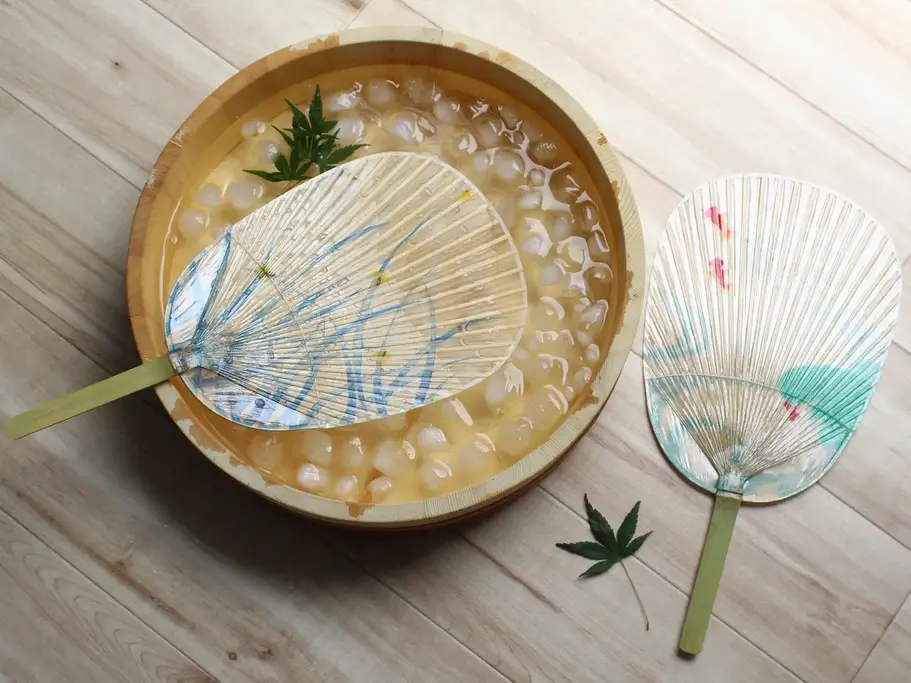
Unlike regular fans, which are often just for waving air around, mizu uchiwa can create a gentle coolness thanks to how the water evaporates. However, they are still made of paper and bamboo, so they should not be soaked for too long. They were made in many lovely styles, such as plain, colored, or painted with flowers and fish.
These charming fans were created long ago as special gifts for visitors who saw cormorant fishing on the Nagara River. By the Meiji period (1868-1912), people from other countries also began to admire them, and their production increased. Today, you can find mizu uchiwa in shops around Mino and other parts of Gifu. They come in different pictures and patterns. Some are meant to be used daily, others are prettily mounted on stands as room decorations.
Are you looking for great snacks this summer? Check out Sakuraco! Sakuraco delivers traditional Japanese snacks, teas, and sweets from local Japanese makers directly to your door so you can enjoy the latest treats directly from Japan!
How is it made?
Mizu uchiwa fans are made with great care and skill, using special materials from nature. At the heart of each fan is a special kind of Japanese paper called gampi washi, made from the bark of the gampi plant. The fibers of this plant are delicate and silky, which makes the paper firm, soft to the touch, and almost see-through.
While many papers today are made quickly, this one takes time. Artisans from a group called Corsoyard spend hours in cold water, picking out tiny bits of dust and dirt by hand before making the paper. They don’t use bleach or tricks to hide the spots but clean everything by hand, making each sheet of paper perfectly pure.
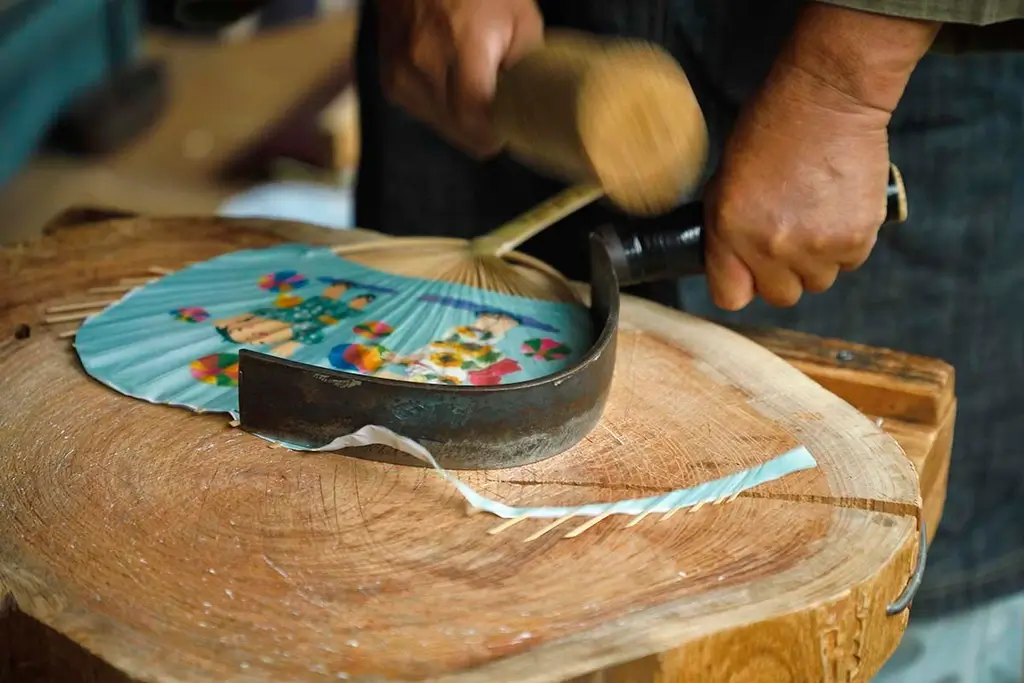
Once the gampi paper is ready, the next step is to gently stretch it over a fan frame made of smooth, carefully carved bamboo. The handle and outer frame are shaped from one long piece of bamboo, using traditional techniques from Marugame, famous for fan-making. Then comes a very delicate job: brushing on a natural varnish that helps protect the paper and gives the fan its glowing look.
However, the varnish must be just right. Too much and the paper may bend; too little and the fan won’t last long. So the artists adjust how much they use depending on the daily weather. They usually brush and dry the fan at least three times to make it just right.
After this, some fans are left plain and simple. Others are decorated with soft colors or lovely patterns using surikomi, where the paint is gently pressed onto the paper. When finished, each mizu uchiwa feels light in the hand and has a clear, smooth appearance.
Are there any other famous types of uchiwa?
Kyo uchiwa
Kyo uchiwa comes from the elegant city of Kyoto. They are also known as miyako uchiwa (capital fan) or gosho uchiwa (imperial palace fan). Each kyo uchiwa is crafted with many thin bamboo ribs and soft washi paper through 16 careful steps. Some fans show calm scenes from nature or poems, and others sparkle with gold leaf and elegant colors.
One special thing about this fancy fan is how it’s made. The round part of the fan and the handle are made separately. This method, called sashie, was added after the Edo period (1603-1868). The idea of this fan came from Korea long ago, around the 14th century, and it slowly became part of Kyoto’s culture, especially loved by the Imperial Court for its elegant artwork.
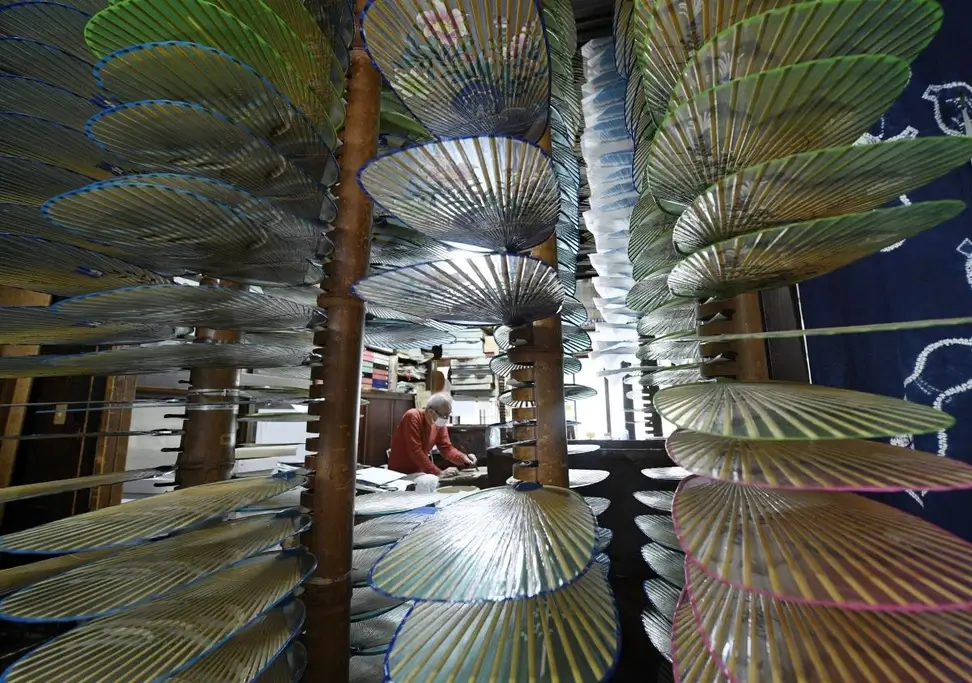
Boshu uchiwa
Boshu uchiwa is a lovely fan that originates in the southern part of Chiba Prefecture. Years ago, this area was known for its strong bamboo, and during the Edo period, it became an essential spot for fan making. The fan got its name from this region and quickly became popular.
Each fan keeps the natural round shape of bamboo. The ribs are made from 48 to 64 thin strips tied with thread. The handle is also round and made from a single piece of natural bamboo, giving the fan a smooth feel. Only a few people make them by hand, following all 21 steps.
Why should I own a mizu uchiwa?
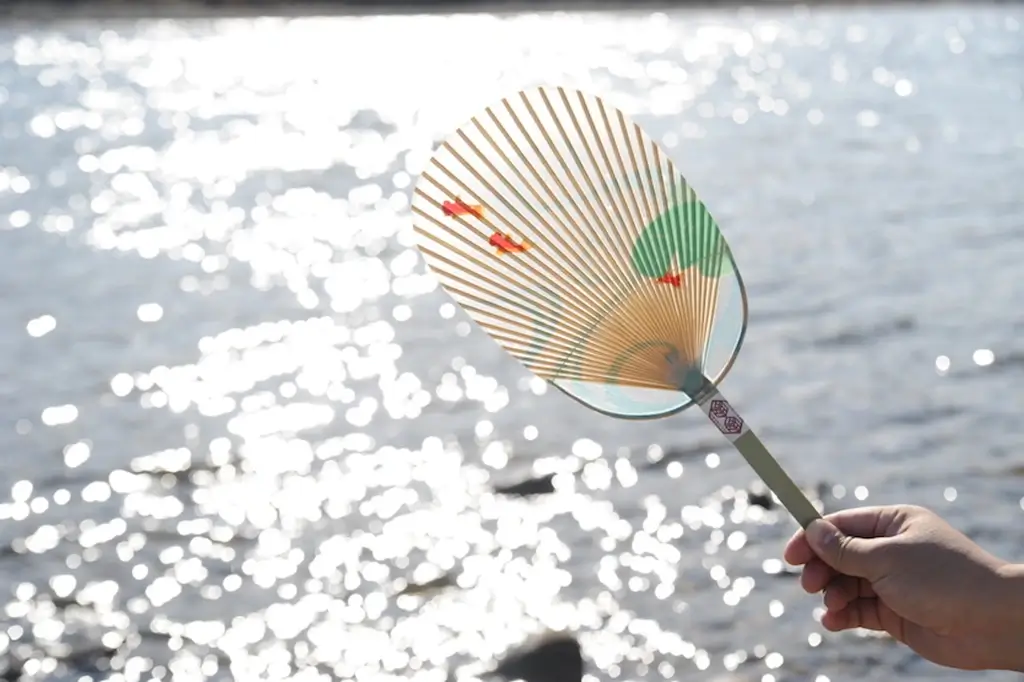
Mizu uchiwa are made with care, patience, and materials from nature. Their clear look evokes the feeling of water and light, and the gentle breeze they create feels calm and refreshing. They aren’t just practical; they reflect the spirit of thoughtful making and the beauty of slowing down. Whether you use it in the summer heat, decorate your room with it, or buy it as a gift for someone you care about, it brings warmth and thoughtfulness into everyday life. Do you own or know any other types of traditional Japanese fans? Share them with me in the comments below!

